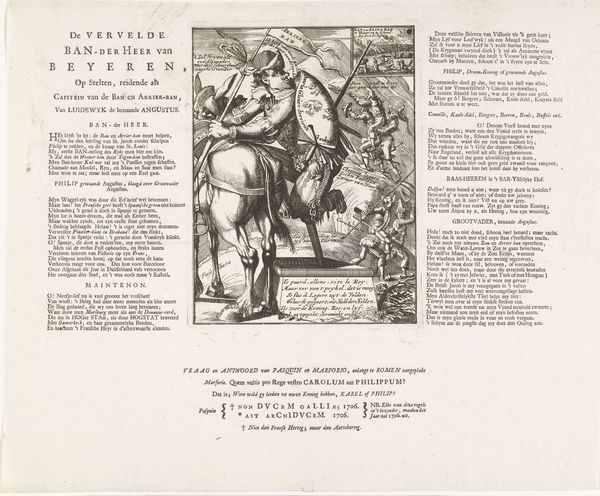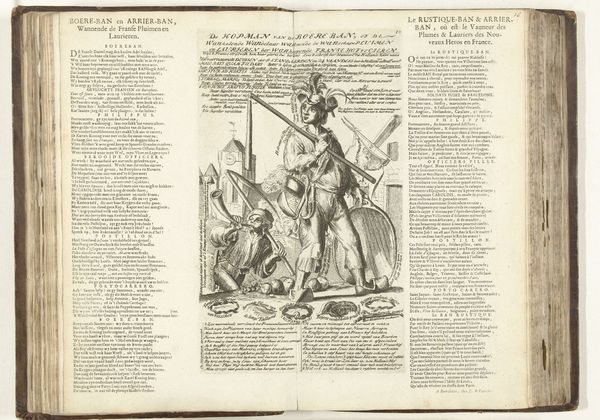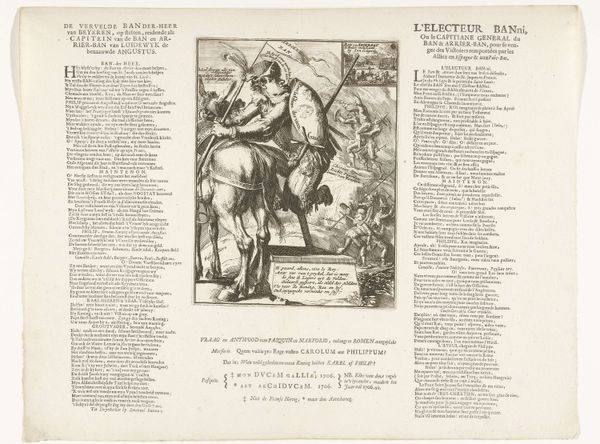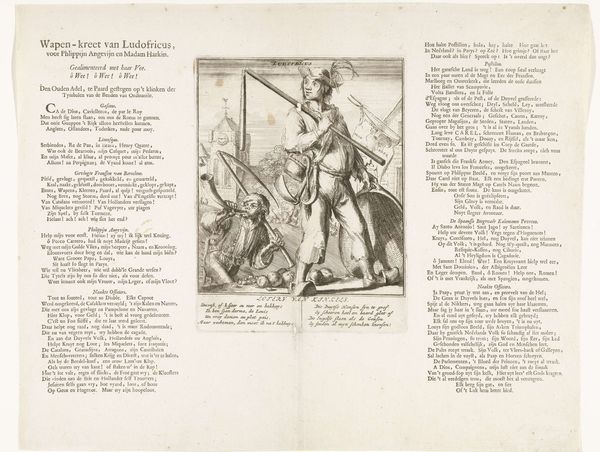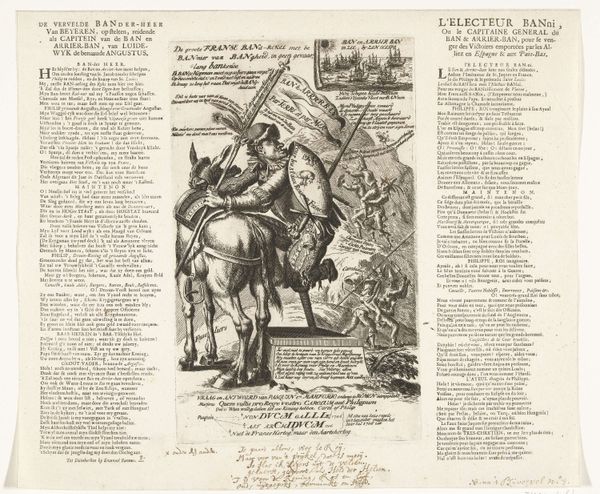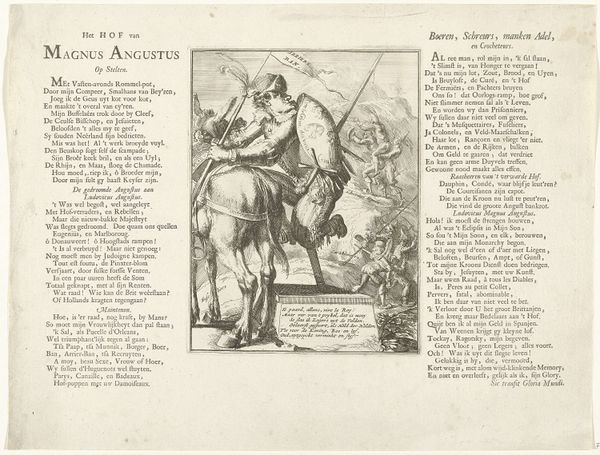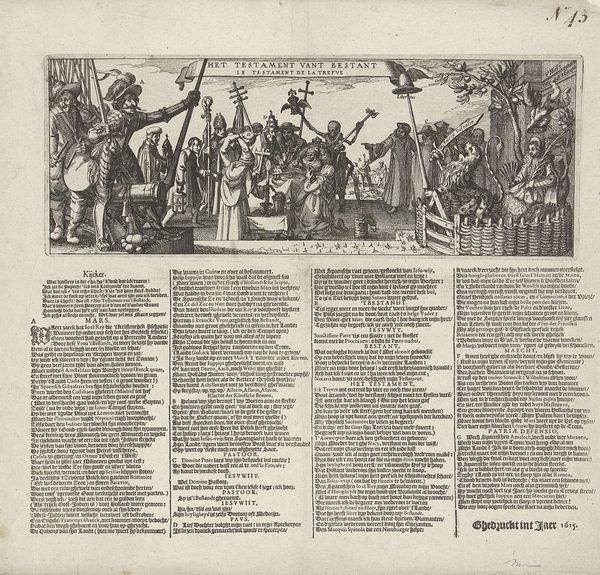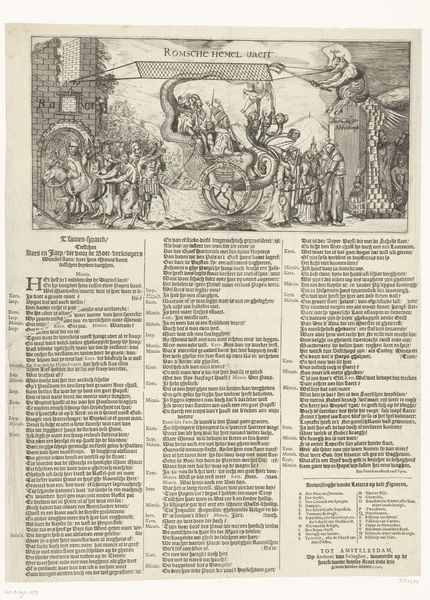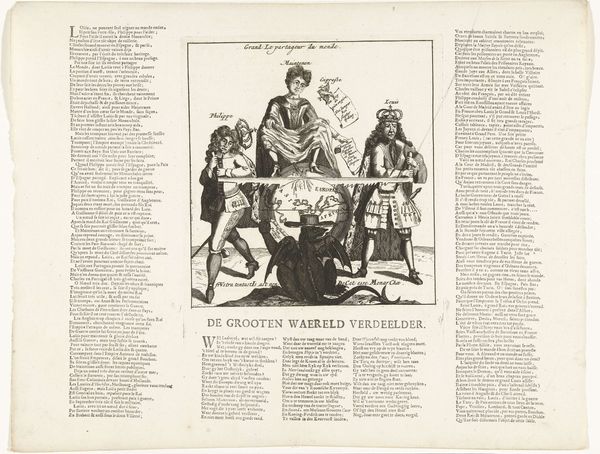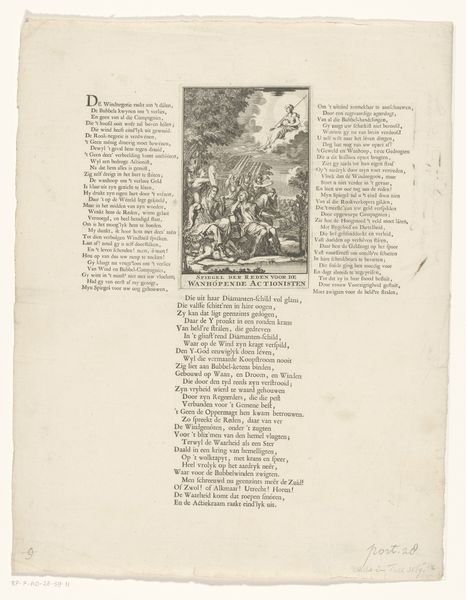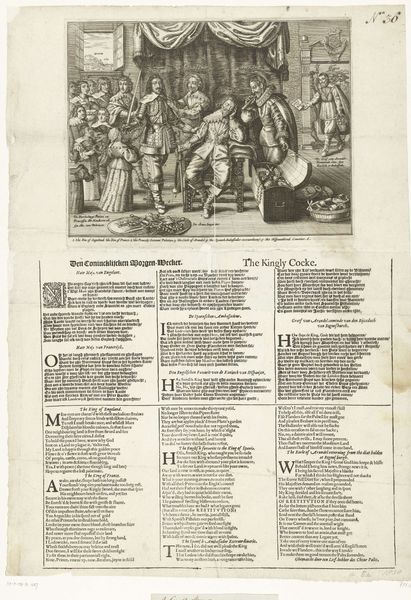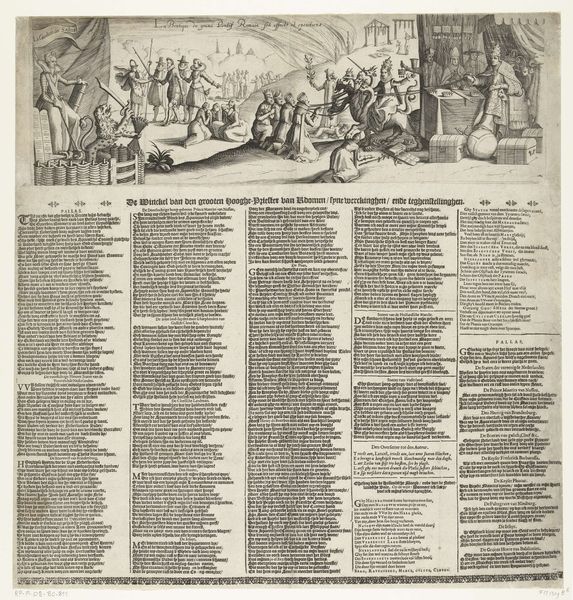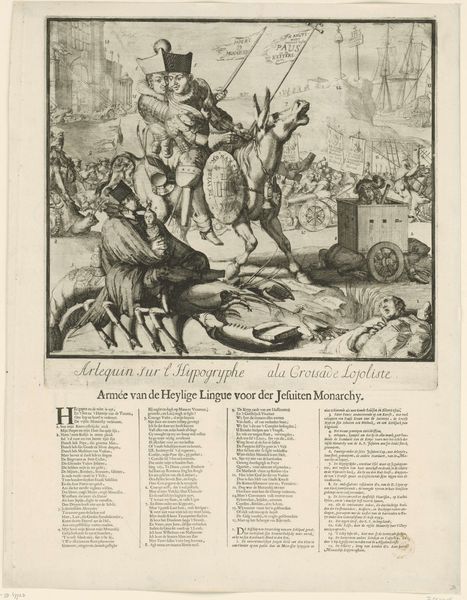
print, engraving
#
baroque
# print
#
figuration
#
engraving
Dimensions: height 317 mm, width 400 mm
Copyright: Rijks Museum: Open Domain
Editor: Here we have an engraving from 1706, “Spotprent op de Franse boerensoldaten, 1706,” which translates to “Cartoon of the French peasant soldiers” attributed to an anonymous artist at the Rijksmuseum. I'm immediately struck by how the central figures are framed, almost mocked, while surrounded by text. What kind of story does this visual narrative tell? Curator: The piece speaks volumes about the complex socio-political climate of its time, positioning "peasant soldiers" within a larger discourse of power and representation. This image likely functioned as propaganda. Consider, who is being ridiculed here, and what does that ridicule signify? Editor: It looks like the artist is poking fun at French soldiers, perhaps portraying them as unskilled and unsophisticated, judging by their somewhat clumsy appearance. Curator: Precisely. This connects to the tradition of depicting the "other" in art. How does caricature function as a tool for social commentary? Is this just lighthearted humor or does it reflect deeper societal anxieties and prejudices regarding class and national identity? Editor: I see. It’s not just about making fun, but about reinforcing a sense of Dutch superiority by belittling the French. The image reduces them to caricatures and affirms power dynamics through the device of mockery. Curator: And that brings us to considering the historical context, the specific conflict this caricature refers to. Understanding this provides another layer to interpreting how art participates in constructing national identities. So how might contemporary theory inform our reading of this piece? Editor: This makes me realize how art can actively shape perceptions of different social and national groups. It's not a neutral reflection, but a biased representation meant to sway public opinion. Curator: Exactly. By questioning the motivations and intended audiences, we unveil the art's embedded power dynamics. We understand not just its historical moment but also how visual rhetoric perpetuates throughout history.
Comments
No comments
Be the first to comment and join the conversation on the ultimate creative platform.
